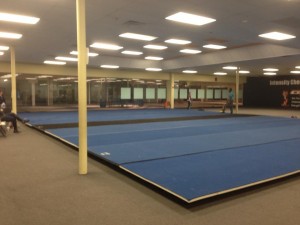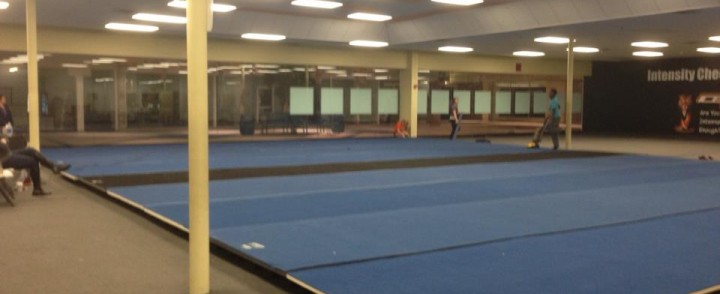Secondhand News: Buying Used Equipment
 As a new gym owner, it can be a challenge to make ends meet with a small budget. One surefire way to save cash when just starting out is to buy used equipment. Be warned, though: this route can be fraught with thorns, and it’s important to keep several caveats in mind during purchase. When in the market for used equipment, consider these need-to-know tips from top equipment experts:
As a new gym owner, it can be a challenge to make ends meet with a small budget. One surefire way to save cash when just starting out is to buy used equipment. Be warned, though: this route can be fraught with thorns, and it’s important to keep several caveats in mind during purchase. When in the market for used equipment, consider these need-to-know tips from top equipment experts:
Do your homework. Be curious. Know what you want—and then ask intelligent questions. Stacy Finnerty, vice-president of Tumbl Trak, a Michigan-based provider of cheerleading, dance and gymnastics equipment, has a list of some helpful basic questions to ask the original manufacturer: What was the original retail price of the item? Were there any product recalls of this particular item? What value would the manufacturer place on the used item? What is the life expectancy of the item? Is the manufacturer able or willing to look up the original bill of sale to confirm the age of the item? Contacting the original manufacturer may seem like extra work, but it can go a long way in helping you determine whether a piece fits your needs or not.
Network like mad. You can visit a dozen equipment stores or spend hours digging out deals on Ebay, but nothing works like networking when trying to get good deals on used equipment. When Josh Kennedy, owner at Horseheads, NY-based Intensity Cheer Elite, was looking for a used tumble track and a portable mat, he posted profusely on social media about his requirements. He conveyed his requirements to other gym owner friends and even personal friends. Through networking, he stumbled upon a golden lead—a woman who was shutting her business down and looking to sell items quickly. Kennedy got a tumble track and a mat at throwaway prices.
Consider age and depreciation. A question you’ll be asking a lot when in the market for equipment: “How old is this piece?” Yet old is not always bad. “The number of years someone has owned a piece of equipment is not necessarily a factor,” says Matthew Miller of Gateway Sports Source, a St. Louis-based supplier of cheer and gymnastics equipment. “If it is a small club, an item could still be in great shape after eight years. But, if it is a big gym with lots of athletes using that item every day, it could be ready for the dumpster.”
Moreover, some items like balance beams can be robust enough for use even after 25 years, says Ross Athletic Supply owner Ross Morreale—but he adds that you wouldn’t want to buy a mat that’s been used that long.
Seek credible sources. Though there’s nothing like personally checking a piece of equipment out, most gym owners don’t have the time to actually visit a supplier. Your best bet is to ensure that you’re buying from a credible source. “The longer someone has been in business, the easier it should be for you to trust them,” says Morreale. “Ask people in your gym and other gyms for references; that’s one of the best ways to find credible vendors.”
Carefully vet any online purchases. Sites like Ebay and Craigslist can sometimes yield great deals, but exert caution right from the word “go” when dealing with online vendors. “We’ve heard horror stories from customers who purchased stuff off eBay only to find three out of four parts of a piece not working,” says Finnerty. He adds it’s usually okay to buy mats and other foam products from these sites as long as you’ve seen pictures and are aware of the item’s condition.
Morreale says once someone on a site sells you something, you’re probably not going to hear from them again. “You don’t know the person you’re dealing with on the other end, so it’s always a bit risky,” he says. If and when you do buy online, consider using PayPal, as they offer buyer protections such as a dispute resolution center where you can request a refund for items that don’t match the description.
Capitalize on event attendance. Cheerleading events can be a great avenue for scoping cheap equipment for your gym. “Generally, such pieces—called demo pieces—have been used once or twice and are as good as new,” says Morreale. While demo pieces are more expensive than your standard used equipment, you can get anywhere from six to 15 percent off, and they typically have a longer shelf life.
Check our blog tomorrow for tips on how to inspect prospective purchases before you buy!
–Dinsa Sachan









Emily - EquipNet.com
January 30, 2014 @ 6:28 am
Buying a used machine can be done for the buyers which really notice the condition of the machines. Machines used in an industry usually very large and have very high price. Therefore, do not let the money which spents to buy the machine becomes useless.